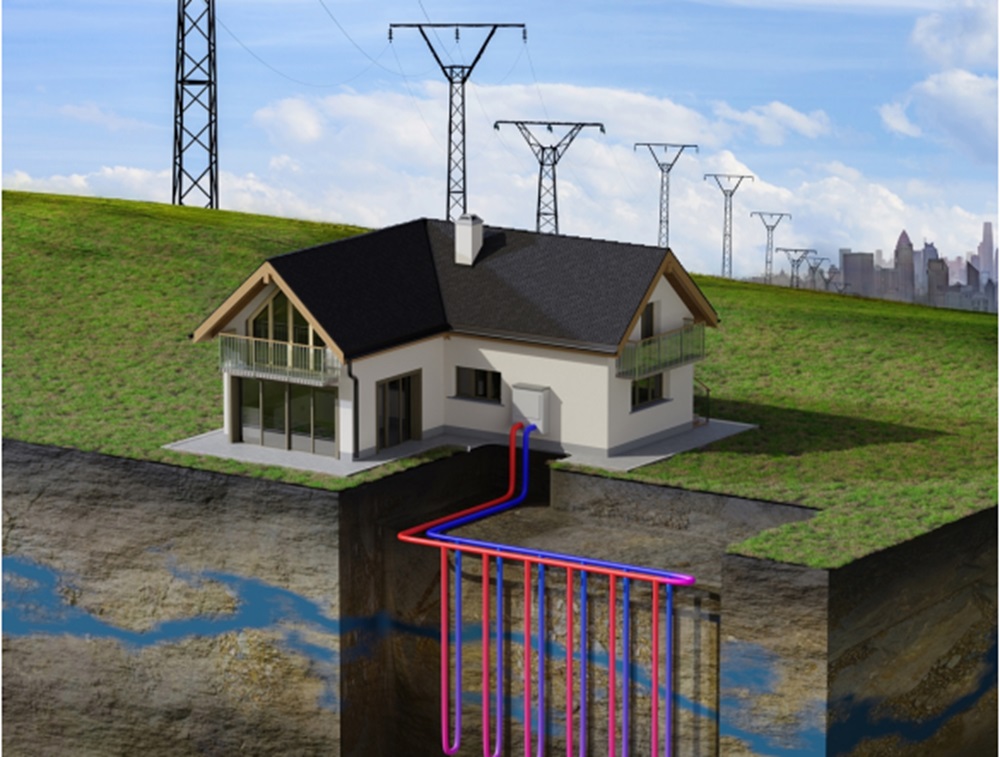By deploying geothermal heat pumps (GHPs) at mass scale could decarbonize heating and cooling and save energy in U.S. buildings, according to a report conducted by experts at Oak Ridge National Laboratory and the National Renewable Energy Laboratory and funded by the Department of Energy (DOE’s) Geothermal Technologies Office (GTO),
By retrofitting approximately 70% of U.S. buildings with GHPs, along with improving the building envelope, the analysis finds that electricity demand could be reduced by as much as 13% by 2050 versus decarbonizing without GHPs. According to the report, this would avoid as much as 24,500 miles of new grid transmission lines by 2050.
GHPs are help lower building energy costs because of their high efficiency and ability to supply heat without fuel purchases. Also called ground source heat pumps, the way GHPs work is they transfer heat to and from the ground by circulating water (or antifreeze solution in regions with cold climates) through underground piping. As a result, GHPs have no emissions.
GTO funding this study in order to investigate the impacts on the electric grid of the large-scale deployment of GHPs. For the purpose of analysis, the researchers simulated the energy use impacts of deploying GHPs into 68% of existing and new buildings in the United States (78% residential, 43% commercial) in 14 climate zones across the contiguous United States by 2050.
The study found significant savings in grid costs, CO2 emissions, and building energy consumption. Specifically, the research concluded that if all applicable buildings in the contiguous United States were retrofitted with GHPs at once, electricity use would be reduced by 401 TWh, which is an 18% reduction from the baseline EULP each year. Furthermore, the study found that such widespread use would eliminate use of 5,138 billion MJ of fossil fuels annually.
“Geothermal heat pumps offer enormous value for the nation’s energy future,” said Alejandro Moreno, associate principal deputy assistant secretary for energy efficiency and renewable energy. “This report confirms that geothermal heat pumps are a ready-made strategy for decarbonizing our buildings while reducing the need for new electricity generation and transmission, and bringing energy savings to Americans nationwide—all while creating U.S. jobs.”
In addition to saving energy and cutting carbon, another advantage would be using domestically produced GHPs, as most are made in America. Increased use would stimulate a domestic industry, create local jobs to install and maintain the systems.
This content is protected by copyright and may not be reused. If you want to cooperate with us and would like to reuse some of our content, please contact: editors@pv-magazine.com.









The drawing of a GSHP shows 6 short wells connected but the alternative is a single deep well which may be less expensive and more efficient. What are the pros and cons for each system?